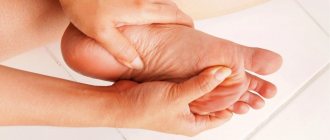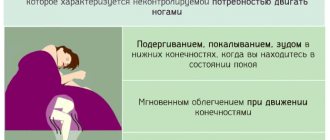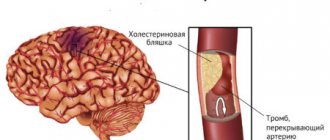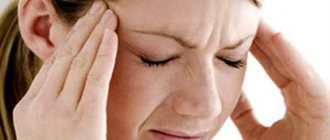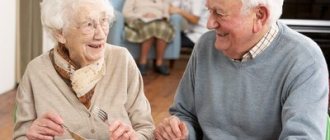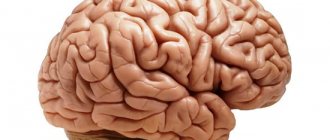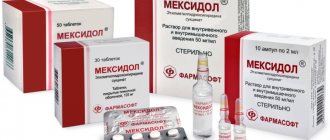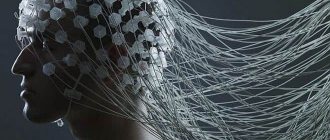Maltseva Marina Arnoldovna
Neurologist, specialist in the field of extrapyramidal pathologies, doctor of the highest category
Shabunina Ekaterina Mikhailovna
Neurologist, category 2
Impairments in coordination and gait, stability and balance are not diseases in themselves. These disorders are symptoms that occur in a wide variety of diseases.
Balance is regulated automatically by the vestibular and muscular system, so people don’t really think about how to maintain an upright position while walking, standing or sitting. As long as the muscular and vestibular apparatus work harmoniously and reliably, a person simply does not need to think about it. However, like all systems of the body, the vestibular apparatus can work with disturbances. It is in such cases that a person experiences coordination disorders and movement disorders. Coordination of movements allows a person to perform clear movements and consciously control them. When vestibular disorders occur, a person experiences unsteadiness when walking and instability of the torso.
If the patient has impaired coordination of movements, this indicates some changes in the functioning of the central nervous system. The human central nervous system is a complex formation of nerve cells that are located in the brain and spinal cord. At moments when a person wants to make a particular movement, a signal is sent from the brain, in response to which the person’s limbs, torso or other parts of the body begin to move. In cases where the central nervous system does not work properly, the signal from the brain is transmitted in a distorted form or does not reach its target at all.
There are quite a few factors that influence poor coordination of movements:
- various brain injuries;
- strokes;
- physical exhaustion of the body;
- sclerotic changes;
- parkinsonism;
- muscle dystrophy;
- exposure to alcohol, narcotic and other toxic substances;
Catalepsy is a fairly rare phenomenon. This is a disorder in which the muscles weaken due to strong positive or negative emotions experienced by the person.
Impaired coordination of movements is considered a dangerous deviation, since in a state where a person cannot adequately control his movements, it is quite easy to get injured.
Various movement disorders are often observed in old age. In addition, such deviations may be a consequence of previous neurological diseases or diseases of the musculoskeletal system.
There are several main manifestations of motor coordination disorders:
- Tremor, manifested by rhythmic shaking of the hands or head. This disorder can be almost unnoticeable at rest, and increase with anxiety.
- Uneven, shaky movements.
- Ataxia. This disorder is caused by damage to the frontal parts of the brain, nerve fibers or cerebellum. With static ataxia, it is difficult for a person to maintain balance in a standing position; with dynamic ataxia, it is difficult for him to move in a balanced manner.
If you experience any of the symptoms described above, you should contact a neurologist, cardiologist or toxicologist.
Clinical Brain Institute Rating: 3/5 — 35 votes
Share article on social networks
Kinds
Depending on the main site of damage to the central nervous system and the characteristics of ataxia, the cerebellar form of the disease associated with damage to the cerebellum is distinguished. In turn, it is divided into three forms:
- static - coordination is generally impaired when standing, which is expressed in instability, swaying from side to side - this forces a person to stand with his legs wide apart and balancing with his hands. There is a tendency to fall sideways or backwards;
- statolocomotor, which is expressed in unsteadiness of gait, swaying while walking;
- kinetic, which manifests itself in a lack of coordination when performing precise actions with the limbs (for example, touching the nose with a finger causes a strong swing of the hand when approaching the nose);
- sensitive, which is associated with damage to the pathways that provide sensitive nerve impulses. Manifestations of ataxia (unsteadiness, lack of coordination of movements) are most pronounced with eyes closed (when there is no visual control over the execution of movements);
- vestibular, associated with damage to the vestibular apparatus, which ensures the maintenance of balance and makes peculiar adjustments when performing movements. It manifests itself as a disturbance in gait and coordination of movements, as well as dizziness with nausea and vomiting. Often in such patients, nystagmus (involuntary twitching of the eyeballs) and hearing impairment can be detected;
- cortical, associated with damage to the cerebral cortex, which is responsible for voluntary movements. The frontal lobe is most often affected, and therefore this ataxia is also called frontal ataxia. With frontal ataxia, a “drunken gait” is observed: a person walks, “braiding” his legs, while the body deviates in the opposite direction from the lesion. This type of ataxia can be combined with other signs of damage to the cerebral cortex, such as mental changes, impaired sense of smell, auditory and olfactory hallucinations, and impaired memory for current events.
What can be done for an elderly person with unsteady gait
Since unsteady gait increases the risk of falls, it is important to secure the elderly person's home:
- Remove all items from walkways (shoes, furnishings, extension cords, etc.).
- The corridors should be well lit (especially the path to the bathroom, toilet and kitchen).
- Place non-slip mats on the floor of the bathtub as well as at the exit of the bathtub.
- Buy comfortable house shoes with non-slip soles.
- You can keep a flashlight by your bed and use it if you need to get up at night.
According to doctors' recommendations, an elderly person needs:
- wear leg braces and orthoses;
- use a cane or walker for additional support and balance.
Causes
Brain diseases:
- acute disturbance of cerebral circulation (in the vertebrobasilar system, which supplies blood to the brain stem, in which vital centers are located - vasomotor, respiratory);
- tumors of the brain (especially in the brain stem) or cerebellum;
- traumatic brain injuries;
- malformations of the skull and brain: for example, with Arnold-Chiari anomaly (descent of part of the cerebellum into the large foramen of the skull, leading to compression of the brain stem);
- hydrocephalus - excessive accumulation of cerebrospinal fluid (cerebrospinal fluid that provides nutrition and metabolism in the brain) in the ventricular system of the brain;
- demyelinating diseases (accompanied by the breakdown of myelin (a protein that ensures the rapid conduction of nerve impulses along fibers): for example, multiple sclerosis (a disease in which many small foci of demyelination form in the brain and cerebellum), disseminated encephalomyelitis (a disease of a presumably infectious nature in which Many foci of demyelination form in the brain and cerebellum).
Diseases of the vestibular apparatus (responsible for maintaining balance and also helping to carry out precise movements) or vestibular cranial nerves:
- labyrinthitis - inflammation of the inner ear, also accompanied by severe dizziness, hearing loss, nausea, as well as general infectious manifestations (fever, chills, headache);
- vestibular neuronitis - inflammation of the vestibular nerves, manifested by hearing loss and nystagmus;
- Neuroma of the vestibular nerve is a tumor of the vestibular nerve sheaths, manifested by hearing loss and nystagmus.
Poisoning: sleeping pills and potent drugs (benzodiazepines, barbiturates).
- Lack of vitamin B12.
- Hereditary diseases: for example, Louis-Bar ataxia-telangiectasia (manifested by ataxia, dilated capillaries on the skin (telangiectasia) and decreased immunity), Friedreich's ataxia (manifested by heart defects, weakness in the legs, ataxia and deformation of the foot in the form of an increase in its height).
Symptoms
- Unsteadiness in a standing position: a person sways from side to side until he falls to the side or backwards.
- Impaired gait (it becomes uncertain, shaky, the person seems to be “swept from side to side”) with a tendency to fall while walking to the side or backward.
- Impaired coordination of voluntary movements: when trying to perform a precise movement (for example, bring a mug of tea to your lips), a pronounced trembling of the limb occurs (intention tremor), which leads to inaccurate execution of actions.
- Speech rhythm disturbance: speech becomes abrupt, “chanting.”
- Breathing rhythm disturbance: breathing has an irregular rhythm, the intervals between breaths are constantly changing.
There may also be symptoms associated with damage to nearby parts of the brain, but not specifically related to ataxia:
- dizziness;
- nausea and vomiting;
- headache.
How to improve unsteady gait
Walking 30 minutes a day and maintaining a physically active lifestyle are the most important recommendations for maintaining mobility. But walking alone is not enough.
If your gait has changed due to problems with your lower extremities, exercises to strengthen your muscles and improve your balance will help. They are prescribed by neurologists, orthopedists or physiotherapists. Here are examples of popular exercises.
Balancing on one leg
Hold onto a chair and keep your weight on one leg only. Slowly release the chair. Try balancing for 30 seconds and then increase the time to a minute.
Leg raises
While leaning on a chair, slowly lift one leg in front of you at least 20cm off the ground. At the same time, hold it straight for 5-10 seconds. Repeat several times, then perform lifts with the other leg.
Heel raise
Stand with your feet shoulder-width apart. Slowly rise up onto your toes, then lower back down. Repeat ten or more times.
Diagnostics
- Analysis of complaints and medical history:
— how long ago did the first complaints of unsteadiness of gait and lack of coordination of movements appear;
— did anyone in the family have similar complaints;
— whether the person took any medications (benzodiazepines, barbiturates).
- Neurological examination: assessment of gait, coordination of movements using special tests (finger-to-nose and knee-heel), assessment of muscle tone, strength in the limbs, the presence of nystagmus (oscillatory rhythmic eye movements from side to side).
- Examination by an otolaryngologist: balance test, ear examination, hearing assessment.
- Toxicological analysis: search for signs of poisoning (residues of toxic substances).
- Blood test: may detect signs of inflammation in the blood (increased erythrocyte sedimentation rate (red blood cells), number of leukocytes (white blood cells)).
- Concentration of vitamin B12 in the blood.
- EEG (electroencephalography): this method evaluates the electrical activity of different parts of the brain, which changes in various diseases.
- CT (computed tomography) and MRI (magnetic resonance imaging) of the head and spinal cord make it possible to study the structure of the brain layer by layer, identify violations of the structure of its tissue, and also determine the presence of ulcers, hemorrhages, tumors, and foci of decay of nervous tissue.
- MRA (magnetic resonance angiography): the method allows you to evaluate the patency and integrity of the arteries in the cranial cavity, as well as detect brain tumors.
- A consultation with a neurosurgeon is also possible.
Entry level exercises
To restore coordination, we do special gymnastics. We selected exercises to practice exactly those movements with coordination problems. As we recover, we make the gymnastics more difficult. Therefore, several gymnastics came out. Here's the gymnastics we started with. We started doing some of the exercises in bed.
Nose touching
- I do it while sitting in bed.
- I stretch both arms out in front of me.
- I close my eyes.
- I alternately touch the tip of my nose with the fingers of my right and left hands.
- 10 reps.
Right hand chess
- I do it while sitting in bed.
- I place the pieces on the chessboard with my right hand.
- 5 reps.
Left hand chess
- I do it while sitting in bed.
- I place the pieces on the chessboard with my left hand.
- 10 reps.
Right hand square
- I do it while sitting in bed.
- I “draw” a square with my right hand. In front of you, at arm's length. At the level of the face.
- 10 reps.
Left hand square
- I do it while sitting in bed.
- I “draw” a square with my left hand. In front of you, at arm's length. At the level of the face.
- 10 reps.
Right hand circle
- I do it while sitting in bed.
- I “draw” a circle with my right hand. In front of you, at arm's length. At the level of the face.
- 10 reps.
Left hand circle
- I do it while sitting in bed.
- I “draw” a circle with my left hand. In front of you, at arm's length. At the level of the face.
- 10 reps.
Two squares
- I do it while sitting in bed.
- I “draw” two squares with both hands at the same time and synchronously. In front of you, at arm's length. At the level of the face.
- 10 reps.
Two circles
- I do it while sitting in bed.
- I “draw” two circles with both hands at the same time and synchronously.
- 10 reps.
- In front of you, at arm's length. At the level of the face.
Circle with left foot
- I perform while sitting on the edge of the bed.
- With the toe of my left foot I “draw” a square on the floor.
- 10 reps.
Right foot circle
- I perform while sitting on the edge of the bed.
- With the toe of my right foot I “draw” a circle on the floor.
- 10 reps.
Square feet
- I perform while sitting on the edge of the bed.
- I “draw” a square on the floor with both feet and toes synchronously.
- 10 reps.
Circle your feet
- I perform while sitting on the edge of the bed.
- I “draw” a circle on the floor with both feet and toes synchronously.
- 10 reps.
Treatment
- Treatment should be aimed at the cause of ataxia.
- Surgical treatment of the brain or cerebellum:
— tumor removal;
- removal of hemorrhage;
— removal of the abscess, antibacterial therapy;
- decreased pressure in the posterior cranial fossa with Arnold-Chiari anomaly (descent of part of the cerebellum into the large foramen of the skull, leading to compression of the brain stem);
— creating an outflow for cerebrospinal fluid (cerebrospinal fluid that provides nutrition and metabolism to the brain) with hydrocephalus (excessive accumulation of cerebrospinal fluid in the ventricular system of the brain).
- Normalization of arterial (blood) pressure and drugs that improve cerebral blood flow and metabolism (angioprotectors, nootropics) for cerebrovascular disorders.
- Antibiotic therapy for infectious lesions of the brain or inner ear.
- Hormonal drugs (steroids) and plasmapheresis (removal of blood plasma while preserving blood cells) for demyelinating diseases (associated with the breakdown of myelin, the main protein of the sheaths of nerve fibers).
- Treatment of poisoning (administration of solutions, vitamins B, C, A).
- Administration of vitamin B12 in case of deficiency.
General rules
Gymnastics for problems with balance and coordination requires a specific approach, which is developed by the attending physician. Basic training rules:
- the movement performed should not be painful and should be done with all your might;
- the goal of therapeutic exercises is not to build muscle mass, it primarily restores coordination;
- any complication or acceleration should occur gradually;
- With diligence, any movement can be improved;
- as a rule, exercises are first carried out in a lying position, then gradually move to a sitting and standing position;
- at first you definitely need to monitor your movements; if you are successful, later you can try to close your eyes;
- exercises always begin with large sweeping movements, slowly moving to smaller and more detailed ones;
- each movement is done quickly at first, and then at a reduced pace;
- only a doctor can prescribe and adjust the course of treatment.
